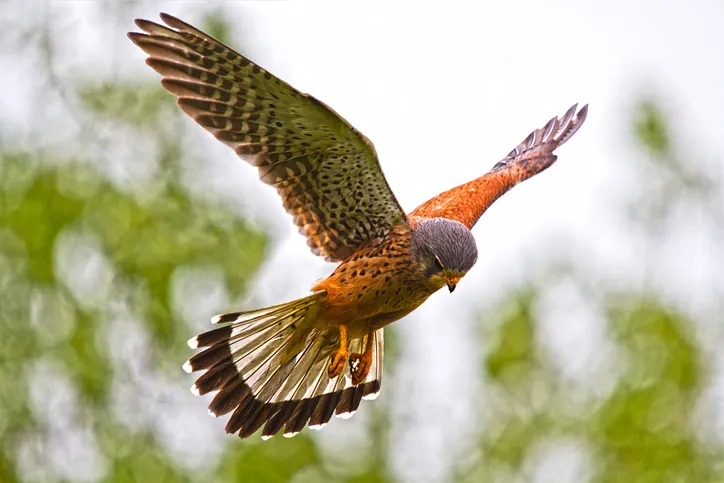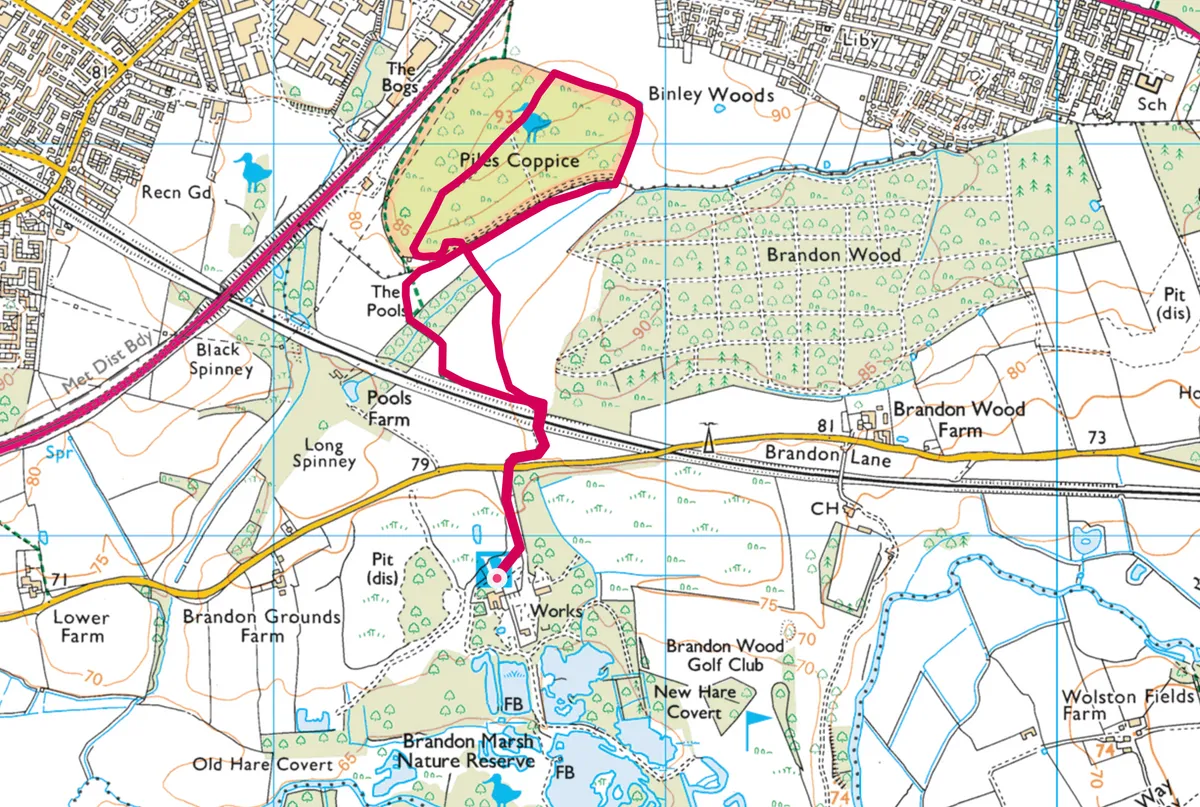Forty years after developing the glorious Brandon Marsh Nature Reserve just minutes outside Coventry’s city centre, Warwickshire Wildlife Trust had an opportunity to double its wilderness, and acquired Brandon Reach. Now larger than London’s Hyde Park, the two reserves physically reach out towards the town, to connect local communities with a rich oasis of nature.
With a history of mixed land use, the grassland, scrub and ancient woodland at Brandon Reach offer a sense of escapism and peace rarely felt so close to major urban infrastructure.

“It’s a mosaic of habitats, with some bits being intensively managed in the recent past, and some barely touched,” says Brandon Marsh officer Nick Feledziak. “There’s something different around every corner.”
This new year, avoid the hustle and lose yourself in Brandon Reach. Wander from Brandon Marsh across seldom-trodden frosty pathways through to Piles Coppice before rewarding yourself with a steaming brew back at Badger’s Tearoom.
Brandon Reach walk
4 miles | 2.5 hours | moderate
1. Wild grassland
Begin your walk at Brandon Marsh Visitor Centre. There is still work to be done on waymarking at Brandon Reach this year, so it’s worth picking up a map. Head north and across Brandon Lane, following signs to Brandon Reach.
Soon the path unfolds into wild grassland, as the Coventry to Birmingham trainline pales into insignificance. The buzz of summer’s marbled white butterflies and slinking grass snakes falls quiet in the meadows in winter, yet it is still a wonderful time to wander the quiet, frosty tracks towards the ancient woodland.
Purple Emperor
Elusive and restricted to large woods in southern England, this can be seen on the wing in late summer, spending most of its time in the treetops. The male is particularly striking.
2. Beneath the canopy
As you approach the fringes of Piles Coppice, keep an eye out for hovering kestrels and circling buzzards, eager for a wintry snack. Warwickshire Wildlife Trust’s decision to sensitively manage Brandon Reach secures a rich future for this precious wood and the wildlife that depends upon it.
Woodpecker
Look up to the branches and trunks of trees for a sight of the blackbird-sized great spotted woodpecker, with its distinctive red tail feathers.
Stepping into the wood, you might be lucky and hear a woodpecker drumming on a nearby tree; all three UK species can be found in this area, including the very rare lesser spotted. Continuing on, you might discover fantastic cathedral-like, small-leaved lime coppice stools – a very rare but pertinent reminder of the former timber land use in Warwickshire. Now, lime coppice stools have an important role in the life cycle of the pauper pug moth, which emerges later in the year.
Wood anemone
Traditional management such as coppicing opens the woodland floor to sunlight, creating ideal conditions for these pretty white flowers.
3. Spring colour
Nearing the heart of Piles Coppice, pause and absorb the peace of the winter woodland. In the spring and summer, song thrushes, tiny goldcrests and hopping treecreepers busy about the canopy. On the forest floor, wood anemones and bluebells hint at the age of this arboreal world in a stunning spring carpet, as the elusive purple emperor butterfly dances above.
Grass snakes
Greenish with a yellow and black collar, a grass snake grows up to 150cm long. It hibernates in the winter, usually from October to April.
4. Time for tea
Take your time as you choose your path back through the coppice towards a different part of the grassland, enjoying wide vistas and a feeling of true wilderness. Return to the entrance of Brandon Reach, cross back over Brandon Lane and follow the signs to Brandon Marsh. Enjoy tea and cake at Badger’s Tearoom, or continue your exploration into Brandon Marsh. Both the Kingfisher and Woodpecker trails are wheelchair-friendly.
Wading birds
Grey herons can be seen at the reserve’s shallow pools and reedbeds. Also look out for crested grebes and little ringed plovers.
Brandon Reach map
Brandon Reach walking route and map.

